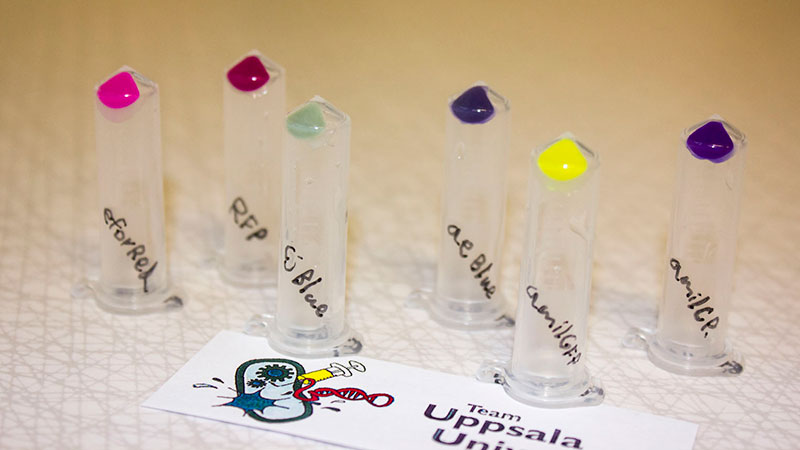Part:BBa_K1484000:Design
AsPink chromoprotein in GoldenGate standard
- 10COMPATIBLE WITH RFC[10]
- 12COMPATIBLE WITH RFC[12]
- 21COMPATIBLE WITH RFC[21]
- 23COMPATIBLE WITH RFC[23]
- 25COMPATIBLE WITH RFC[25]
- 1000INCOMPATIBLE WITH RFC[1000]Illegal BsaI site found at 1
Illegal BsaI.rc site found at 716
Design Notes
AsPink has been designed to be compatible with GoldenGate standards. This allows the part to be used in MoClo (ModularCloning) or GB2 (goldenbraid2) assembly method. These cloning techniques are based on based on Type IIS restriction enzymes that enable parallel assembly of multiple parts in a one-pot, one-step reaction and are becoming widely adopted across the field of Synthetic Biology.
To be in the GoldenGate format, a level 0 CDS part must: start with -the BsaI_F recognition site
GGTCTC
-one non-specific nucleotide
A
-4bp fusion sequence (for CDS this is AATG)
AATG
finish with -4bp fusion sequence (for CDS this is )
GCTT
-one non-specific nucleotide
T
-the BsaI_R recognition site reversed
GAGACC
The asPink GoldenGate biobrick reads:
Prefix_GGTCTC A AATG ___asPink(w/o atg)___GCTT T GAGACC_Suffix
Source
The chromoprotein was taken from the iGEM registry BBa_K1033927 and altered to conform to the GoldenGate standard. Thank you to the The Uppsala team for their chromoprotein collection from which this part was sourced.
References
RFC 105: Standardized PlantSyntax Virginie Rutten
A golden gate modular cloning toolbox for plants. ACS Synth Biol: doi:10.1021/sb4001504. Engler C, Youles M, Gruetzner R, Ehnert T-M, Werner S, et al. (2014)
GoldenBraid: an iterative cloning system for standardized assembly of reusable genetic modules. PLoS One 2011;6:e21622. Sarrion-Perdigones A., Falconi E.E., Zandalinas S.I., Juarez P., Fernandez-del-Carmen A., Granell A., Orzaez D.
A modular cloning system for standardized assembly of multigene constructs. PLoS One 2011;6:e16765. Weber E., Engler C., Gruetzner R., Werner S., Marillonnet S.

